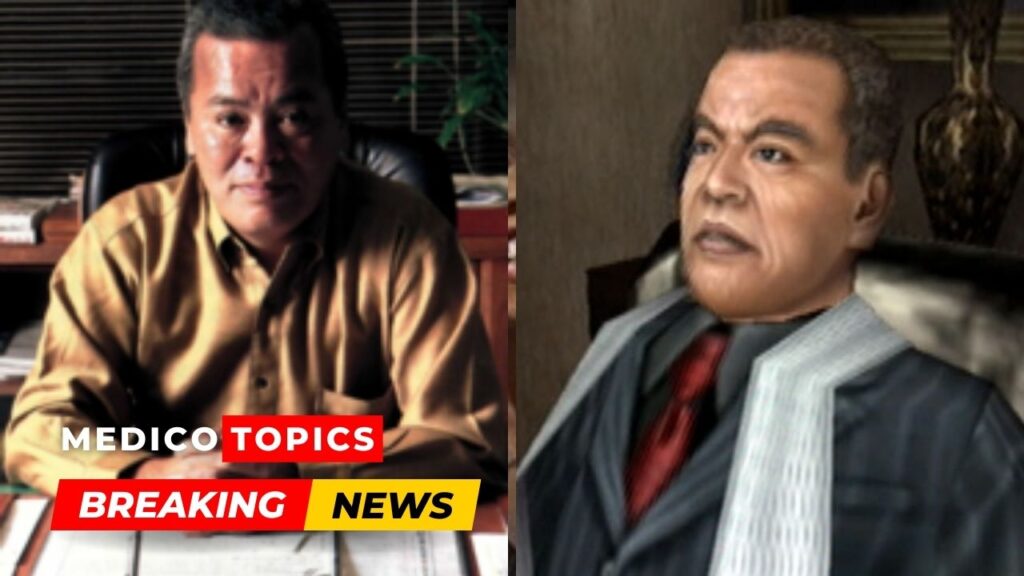
It is reported that Akira Nagai, Managing Director at SEGA from 1965 to 2004, has passed away. Akira Nagai passed on November 15, 2022, at age 79. Let’s find out More about Akira Nagai’s cause of death.
Akira Nagai’s Cause of Death
On November 15, 2022, Akira Nagai passed away at the age of 79. Nagai, one of the managing directors and representatives at the company with the longest tenure, began his career in the 1980s selling entertainment machines after beginning his career in jukebox distribution in 1963 at Nihon Goraku Bussan. Nagai oversaw SEGA’s Amusement Theme Park concept in the 1990s, which resulted in the establishment of numerous Joypolis locations worldwide. His appearance as a Yakuza boss in the first Shenmue game may be what fans most associate with his likeness.
Who is Akira Nagai
Akira Nagai, a Japanese businessman, served as one of Sega’s managing directors and spokespeople for the company for the longest period, from 1965 to 2004. His birthplace is Japan. The employment history of Akira Nagai is Sega of Japan, Sega Amusements Europe, and Nihon Goraku Bussan. He only serves in the General Manager and Executive positions. Nagai oversaw the Amusement Theme Park concept in Sega’s 1990s amusement center business. In Shenmue, he appeared as a yakuza boss and became well-known for it.
Akira Nagai’s Career
After 20 years after his August 1943 birth, Akira Nagai joined Nihon Goraku Bussan. Nagai started working in Goraku Bussan’s single original function, machine sales, and distribution, marking the beginning of a 40-year career with what would later become Sega. He stayed in this position as the business expanded, merged, and underwent changes, going from selling jukeboxes to finally producing its internal works and participating in the design and management of directly operated amusement facilities.
In the 1970s, Nagai worked as a representative; after CSK completed the acquisition of Sega from Gulf+Western in July 1984, he was elevated to the position of general manager of the sales and marketing divisions.
Nagai took on a significant role in the specialized ATP Division, personnel training, and planning for Joypolis branches while still maintaining control over the entertainment center operations division. His prominence at Sega around this time led to interviews with Hideki Sato, Takenori Ogata, and Yu Suzuki alongside him in Kasou Genjitsu Yuugi Taizen and Sogo Amusement Kigyo Sega.
Although the amusement facility business was hit, with its number of locations more than halving from a 1,000-strong count and the failed Entertainment STAGE net@ initiative, its development continued to innovate with successful new chain concepts Sega Arena and Club Sega. He remained with the company throughout the financial turmoil in the late 1990s.
Nagai’s most senior role at Sega came in 2001 when he moved to be representative director of the restructured amusement operations and sales divisions. Three years later, he retired in the wake of the completion of its merger with Sammy, and many of his former colleagues have already left.
What is SEGA?
Sega Corporation is a Japanese multinational video game and entertainment company headquartered in Shinagawa, Tokyo. Its international branches, Sega of America and Sega Europe, are headquartered in Irvine, California, and London, respectively. Its division for the development of both arcade games and home video games, Sega Games, has existed in its current state since 2020; from 2015 to that point, the two had made up separate entities known as Sega Games and Sega Interactive Co., Ltd. Sega is a subsidiary of Sega Sammy Holdings. From 1983 until 2001, Sega also developed video game consoles.
During the latter half of 2020, much of the financial gains Sega made in the earlier part of the year were wiped out due to the impact of the COVID-19 pandemic on its Sega Entertainment division, which ran its arcades. In November, Sega Sammy sold 85.1% of its shares in the division to Genda Inc., though the Sega branding and coin-operated machines produced by the company continue to be found in the arcades. Arcade game development was unaffected by the move. By January 2022, Sega sold the remaining portion of this division to Genda.
Contrasting its losses brought forth by amusement operations in 2020, sales and critical reception of Sega’s home console games improved; Metacritic named Sega the best publisher of the year in 2020. Of its 28 releases that year, 95% had “good” Metacritic scores (above 75%), including two with “great” scores (above 90% for Persona 5 Royal and Yakuza 0), with an average Metacritic score of 81.6% for all 2020 Sega releases
Sega Arcade History: The Formative Years
This interview with former Sega director Akira Nagai was originally featured in the book “Sega Arcade History”. It examines the early history of Sega and tracks the development of the arcade in Japan, from “gun corner” to “game corner” and finally to “game center.” He comments on the well-known Invader Boom phenomenon but also points to other key moments in the history of video games that are arguably just as important.
List of Sega Arcade games
Some of the famous Arcade games are mentioned below
1962 –Punching Bag
1966 –Basketball
1971-Monte Carlo
1972-Monster Gun
1980-Samurai
1981-Space Fury
1993-Michael Jackson in Scramble Training
2000-Marvel vs. Capcom 2: New Age of Heroes
2017-Sega Network Taisen Mahjong MJ Arcade
2018-House of the Dead: Scarlet Dawn
2022-VR Age
SEGA tweetwd a Condolence message to Akira Nagai
Akira Nagai, Former Managing Director at SEGA, Has Passed Away https://t.co/jlqhjtCEoE
— SEGAbits.com (@SEGAbits) November 16, 2022
KEEP READING,
Watch Video: Why was Rasmus Tantholdt, Danish reporter stopped in Qatar? Explained
How did Ros Singleton die? Cause of death & Cancer battle Explained
Follow us on Twitter for more updates.
